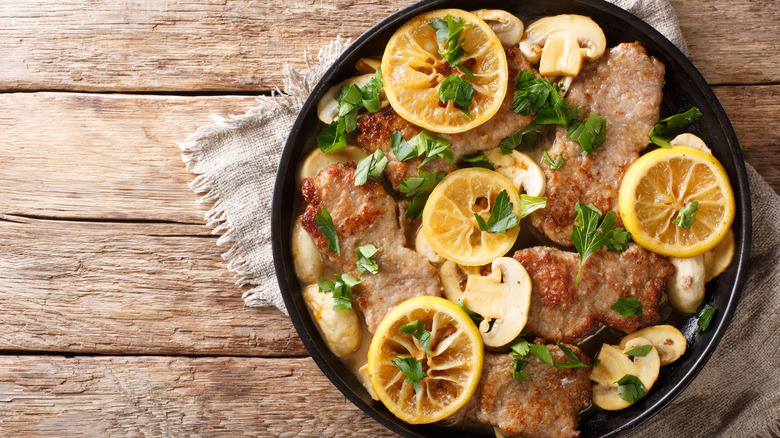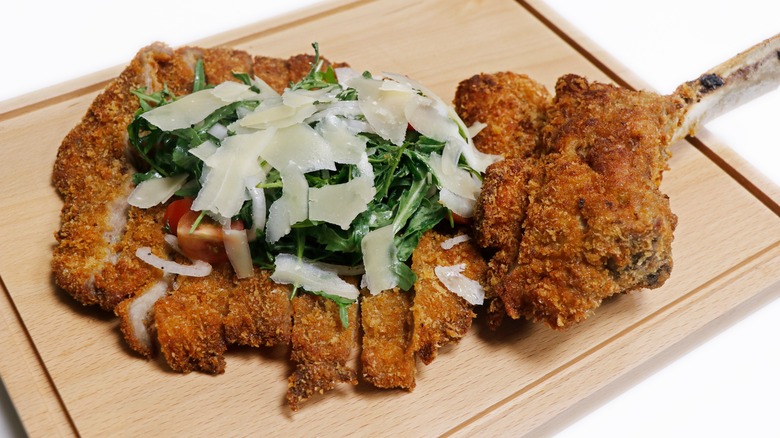What Is Veal, And Is It Healthier Than Beef?
Veal has been a popular dish for thousands of years. It was first consumed in Europe, mostly among the Italians, French, and Austrians, but has since made its way to the United States. Today, veal is a well-established dish on many American menus, though it hasn't earned quite the same popularity as standard beef.
It's not unusual to step into an upscale restaurant and see at least one type of veal dish on the menu — especially if you're at an Italian restaurant. Whether it's veal scaloppine, veal Parmesan, or a veal Milanese, you might be wondering what exactly it is and how it differs from beef.
There is an easy distinction between veal and other types of beef, and it's all about age: veal comes from a calf, which is a young cow, while typical cuts of steak come from fully-grown, matured cows. As a result, veal has a different flavor, fat content, and tenderness compared to regular beef. It may also be healthier for you.
What is veal?
Veal is meat that comes from young cattle. According to the U.S. Department of Agriculture (USDA), there are certain age and weight standards the animals must meet in order to qualify as veal. The calves should be somewhere between 16 and 18 weeks old, and they should not weigh more than 450 pounds. Notably, almost every piece of veal comes from a male calf; they're often considered useless in the dairy industry because they can't produce cow's milk, so they're raised to become veal instead.
Veal calves have certain living standards that are met to ensure the meat's quality. The USDA reports that the calves live in their own individual stalls (with enough space to lay down comfortably) and are closely monitored and fed a milk supplement because they're separated from their mothers about three days after they're born. Veal calves are monitored closely by veterinarians as well to ensure they remain healthy at such a young age.
Is veal healthier than beef?
When it comes to nutritional value, veal is quite a bit leaner than beef. In a 3-ounce serving of veal, there are 166 calories and just under 6 grams of fat. Beef, on the other hand, boasts 227 calories and 15 grams of fat, of which 6 grams are saturated fat (also known as unhealthy fat). Beef also has less protein, with 23 grams per 3-ounce serving compared to veal's 26 grams.
Another, lesser-known benefit to veal is that, in many cases, it is more naturally raised than cattle. The USDA reports that calves are not raised with any hormones, though hormones are often used in raising beef to promote their growth. Ultimately, veal is much less common than beef in terms of consumption, despite the fact that it's healthier. According to the USDA, the average American consumes just 0.3 pounds of veal annually, compared to 54.5 pounds of beef.


